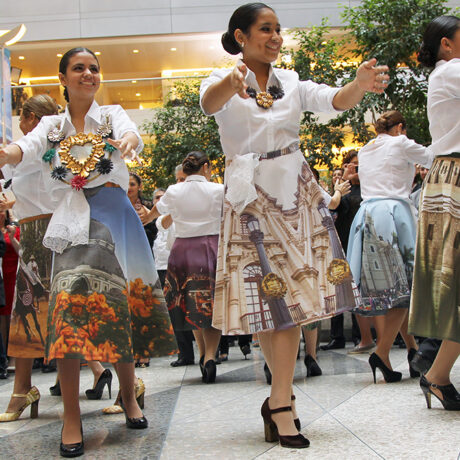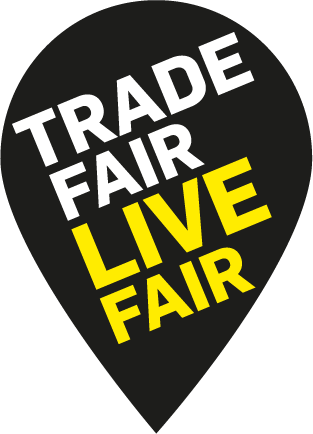SOLIS, Clothing with Purpose
I had been working in the field of humanitarian aid for most of my professional life, when I decided to pursue another of my callings: creating art – in the form of fashion.
As romantic and as beautiful as it may sound, it was also an ethical question for me. It is not easy to go from “saving the world” to “consumerism-related fashion”. Yes, I know, we humans label everything and our reality is neatly labelled, but you know what I mean.
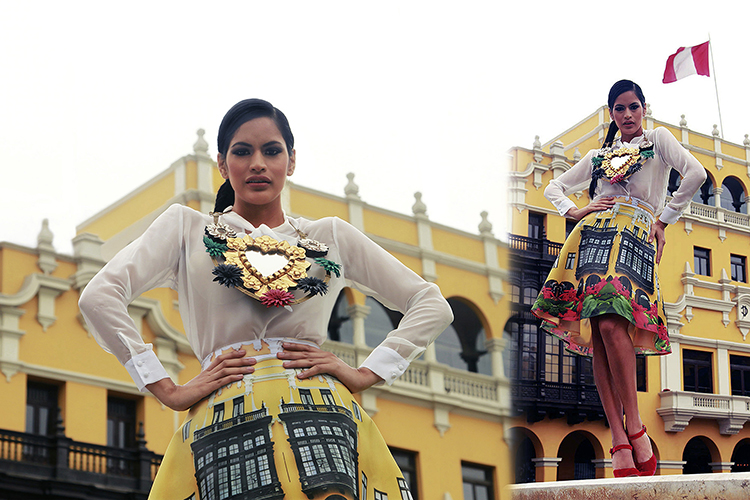
Having been born at time when terrorism was a central concern in Peru and having lived at the center of the conflict at such an early age, fashion was the last thing we thought about when we saw corpses lying about in the plazas, when brothers and sisters were killing each other for various reasons: inequality, extreme poverty and mostly frustration with a confused culture and the established government. That is why I went into “saving the world” as my priority. It was when I came to understand that you can “save the world” from whatever role you chose that I made the choice to leave my work in responding to conflict and disaster and allow my art to provide a vision of appreciation for our lives and culture, helping the world to see a better place and a better future.
During my years in humanitarian aid, I never abandoned my artistic endeavours. My photography was the outlet for all the suffering I saw day to day. However, seeing my photos hanging on the walls, sharing them with so few, made me feel closed, lacking that internal warmth of revelation. I felt I wanted to communicate with people, interact, I wanted to get close, give a message, talk to the human being through what I was doing.
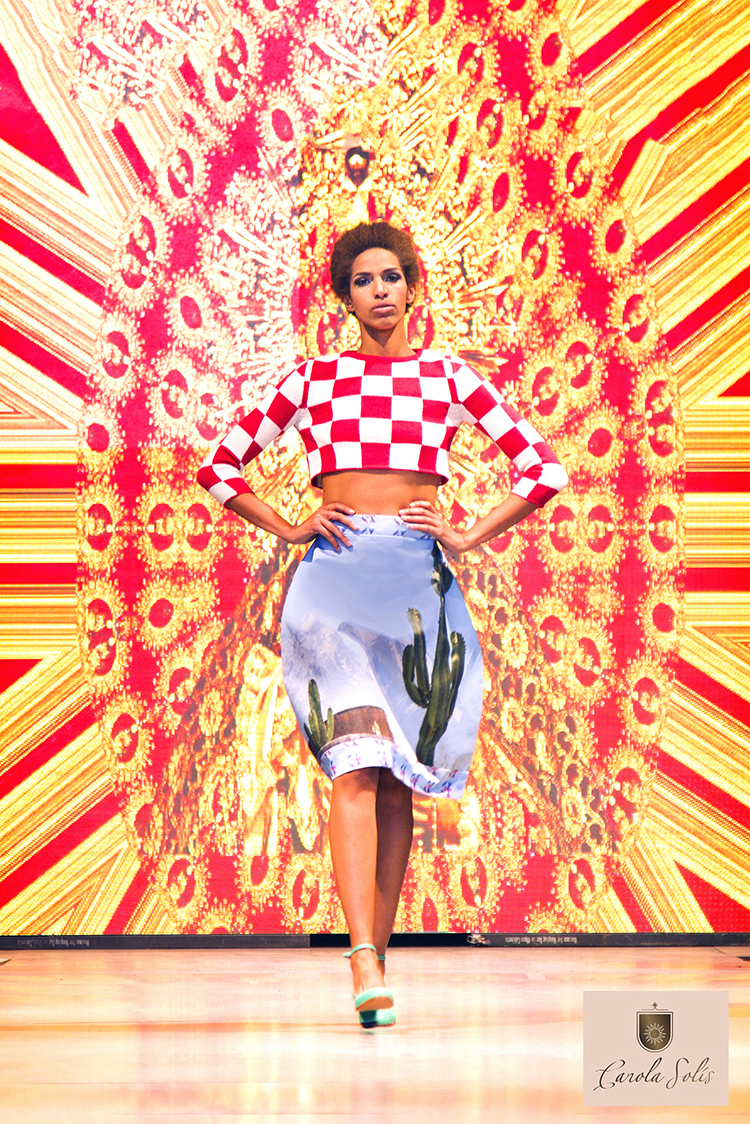
That’s when the “walking canvases” were born. Skirts, blouses and dresses would portray the photographs; people would wear them. Not only that, they would wear a culture, an identity, history, architecture, nature from my country. The SOLIS pieces would have content, a feeling, spread a message, give revelation. To me, this was never a commercial endeavour, but a task with purpose.
The first collection I worked on was kaleidoscopic Lima. I desperately wanted to make up with Lima. Having returned to live here for good, Lima did not receive me well, allergies would put me to bed. Though depressed, lethargic and feeling useless, I knew I was there for a reason and I needed to make the most of it. I knew I needed to find the beauty in the midst of all these contrasting forms.
The city has been known as “Lima the horrible” for so many years, you would understand why when you see it, or better said, when you live it. When I mentioned this at a recent interview in Peru, people warned me: “don’t say that”, but I have the feeling that first you need to face reality, so that you can appreciate its long history and heal it.
The “walking canvases” dream has come true and gone further. An official from Promperu (Commission for the Promotion of Peru, Export and Tourism) saw the launch of the collection at a fashion designer contest finale and invited me to take “Kaleidoscopic Lima” to Washington DC at the International Monetary Fund meeting in 2014. The walking canvases not only spoke to Peruvians, but conveyed Christine Lagarde, to the world, showing the beauty of Peru.
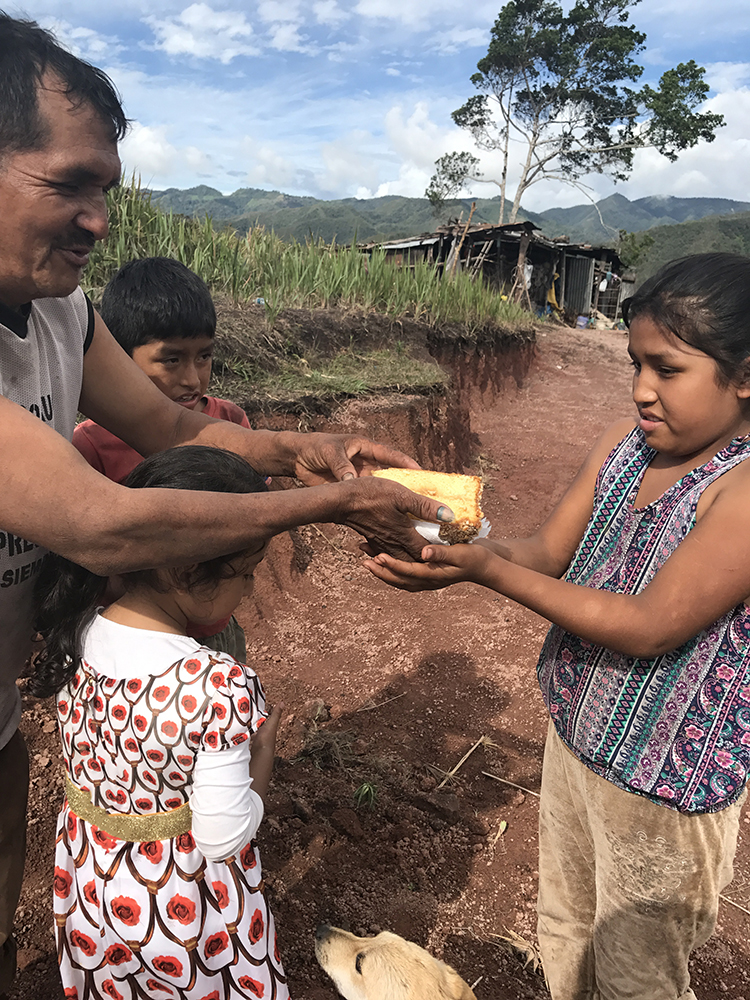
Just like in my childhood, where I learned to frame reality to discover beauty in the midst of the conflict, I had also learned to frame Lima and its history and was now sharing its culture, its contrasts. I learned to love it. It has been a process, it is a process, like life itself. It has helped me harmonize my life with the place where I chose to live, and from the bottom of my heart, I hope to see this happening with all Peruvians, with the world. Every day, I see more and more people embracing who we are, through clothing, through our food, through accepting our history and it gives me energy and the warmth I have sought.
The process starts with me, my two children, and my husband traveling around Peru and taking photographs to be portrayed in my collections. This part is fascinating in itself. Since it is a whole cultural experience for my entire family, we have come to know our country better, and the kids have lived this from the beginning of their lives. It makes me humble and emotional when we are driving around and my daughter sees a photograph of, for example, Machu Picchu and she will tell me: Mommy that’s your Machu Picchu, because she saw it on a skirt, or she will see dancers on the street, and she will say “Mommy that’s your Peru”. I sometimes wonder if she thinks of everything as I do, loving and appreciating her country more and more.
Where Barbies were popular at some point, she loves her Cuzqueña dolls, dolls representing the typical clothing of my country. When she thinks of Wonder Woman, she instantly puts on her Shipibo – Conibo bracelets. These actions tell me something. She also asks me to make her dresses portraying what she sees, it could be the Huaylash, a typical dance in Peru, or anything that she likes, she feels proud, content to be called Peruvian. She has been born in another time, more peaceful times, more loving times for my country and it gives me tears of joy. It gives me hope.
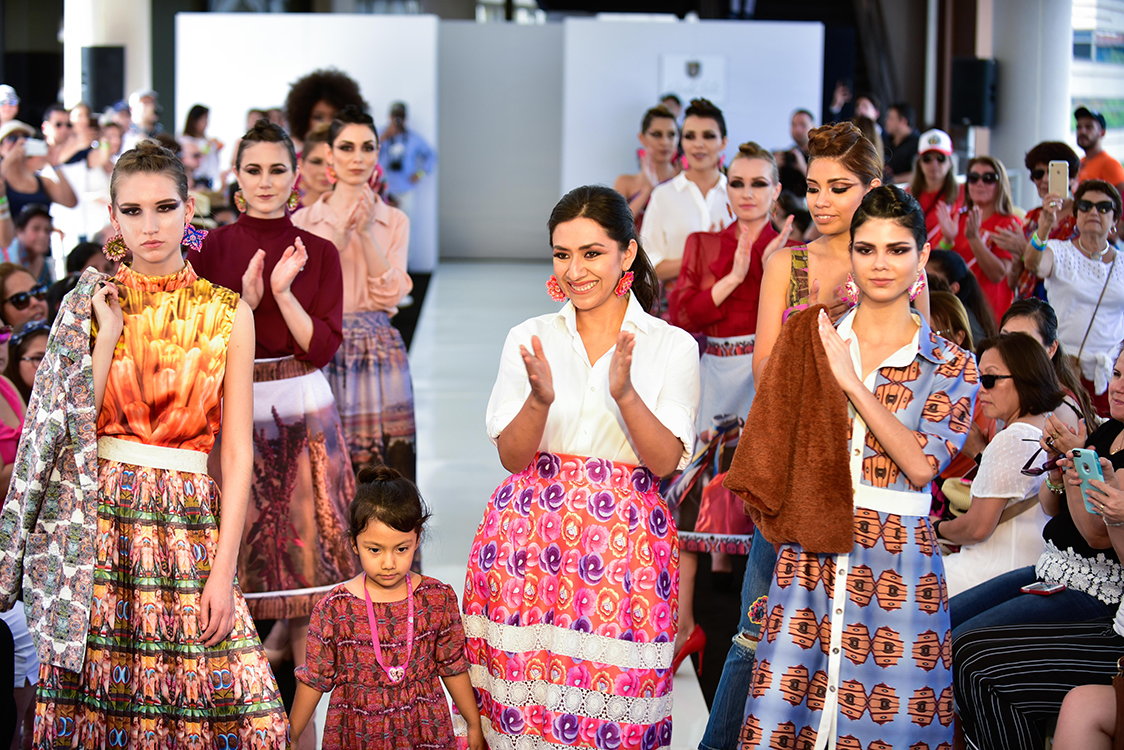
Like all Latin American countries, Peru has a long history of struggle. Colonialism was the harshest on our self-esteem, carrying through to who we are as Peruvians today. Though we have a rich history and precious heritage, we Peruvians struggle with racism, aggression and internal conflict. It is not easy for us to see the good in ourselves, but rather, we tend to focus on the good outside of our country, ignoring our own value. The same applies to clothing, of course. We love foreign brands. Foreign clothing sells like hot cakes at department stores, but locally made clothing – except for very few brands – can call themselves self-sustainable. Another battle we need to fight?
My dream is also that the pieces we wear will be passed onto the next generation, that people feel that this is not a piece you can get rid of easily. The SOLIS pieces speak of a time in Peruvian history, are witnesses of a day, of belonging, but are also modern, wearable, and fun representation of identity. My last name means “it is the sun”, happily enough, people relate my last name to the God of the Incas, the Inti, the Sun.
One day, a journalist said to me: Designers usually focus on the most commercial representations of a culture, why make the effort to show each area of Peru? Peru is not Machu Picchu only, and it is not Lima either, I replied. I am not only a designer, I am an anthropologist, a social communicator, a photographer and I do not take my job lightly. All this means responsibility. A big part of the problem in countries like mine is emphasizing what “sells more” and not accepting that we are a huge array of cultures. Again, that brings divisionism and discrimination amongst us. Part of my work is also to make all these cultures and areas visible on their own, showing not only that all these minorities ARE Peru, but that they also represent the contemporary richness of this country.
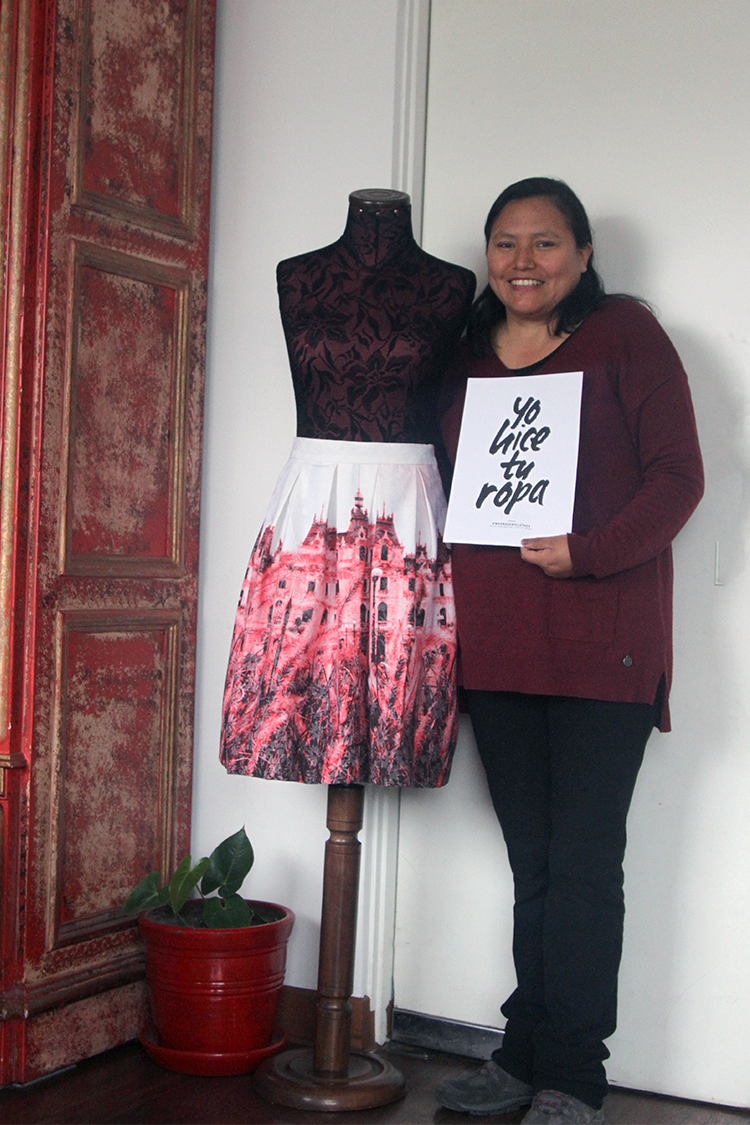
There is something I heard Carry Somers, founder of Fashion Revolution, say about the clothes of Atelier Solis, “you love your clothes when they have a history, and the SOLIS pieces already have it, they already tell you about the culture, folklore, and identity of the Peruvian people.”
Then again, making clothes has also been a journey. I started using a technique in which I portrayed my photos on polyester only. I was so excited with creating big pieces. I wanted to portray my photos as larger than life so that it would get the attention of people. And through studying and experimenting, and wearing my own clothes, I have come to understand all the effort this involves. From taking the photographs, from which I have backache now, to knowing all the processes to make the fabric, to the seamstresses who have helped me from the start, to my assistant printing the pieces, to creating photographic editorials, to marketing. It all involves money, but more importantly, it involves the lives of people who invest their time in the creations, which is priceless, Isn’t it the highest value in our clothing?
Everything is made in Peru, except for some of the fabrics which we buy in Gamarra, the largest textile emporium in Peru and Latin America. As I said I started using polyester, but we all learn. I understand now the behaviour of fabrics. We are using more and more local fabrics, such as natural organic cotton and alpaca, the luxurious fibre originating in our Peruvian Andes. It makes me happy and proud.
The artisans of Peru are also protagonists of the SOLIS brand and I have worked with them from the very beginning. It is true that the collections portray a contemporary vision of what Peru is like these days, but it would be incomplete without the vision of the crafters of our heritage, so all the accessories and alpaca woven pieces have been worked by them.
I never planned anything around this, but it happened that “Kaleidoscopic Lima” was shown in Washington, 2014, “Arequipa Atemporal” in Arequipa, Peru in 2016 and “Incontrastable Valle del Mantaro” in Washington DC in 2017. These collections, a united work of a team of people who show that we can create and work together are travelling and spreading the message. A new generation that believes in its country making the slogan come alive: “local identity, universal soul”.
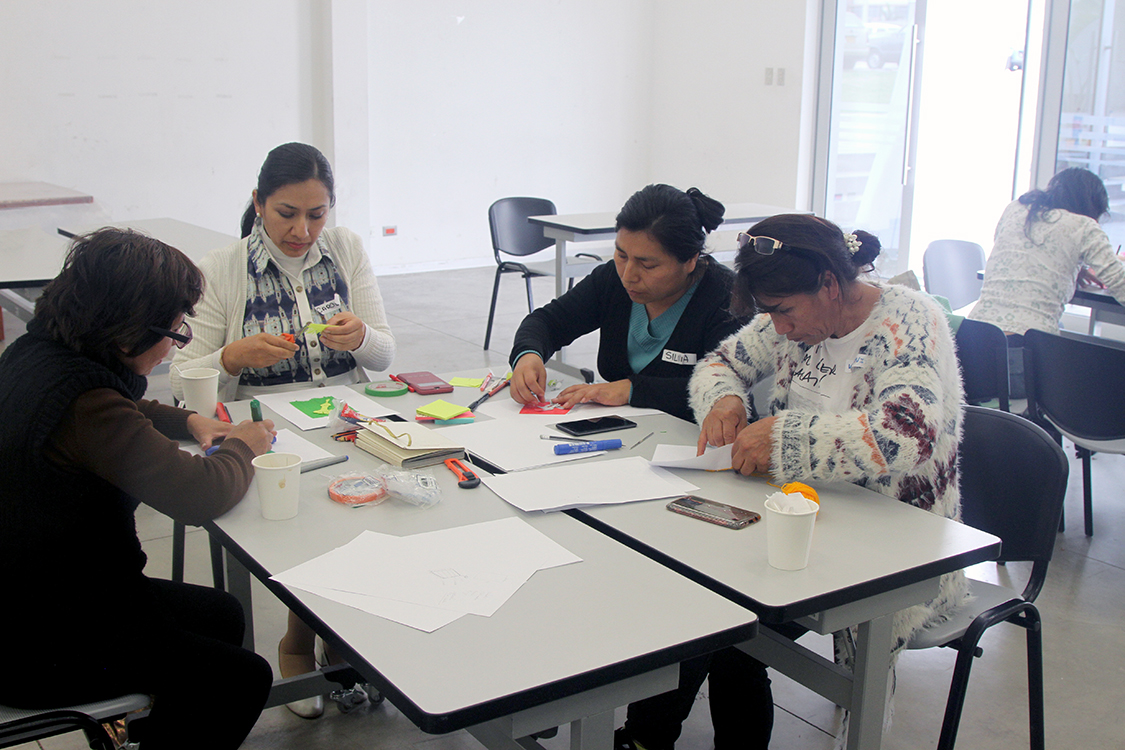
The meeting of “Artisans, Artists and Designers” organized by the Pontificia Universidad Catolica del Peru, of which I was part, just ended a few days ago, and new alliances were created. New alliances and new conversations that open doors to a more aware group of people working in the textile industry, where we talked about the importance of leaving our egos aside and uniting to create something stronger. And it left me thinking: we are talking about something so deep here, why would we still call fashion superficial? Aren´t things created by us? And defined by us? So why not create and find a new concept for fashion? This IS fashion revolution!
I believe that yes, we are living in hard times in this world, but I also believe we are living in a time of transformation, like this fashion revolution, something unthinkable some years ago. Every revolution might bring chaos and uncertainty, but I hope it will mostly bring more awareness, a future with more love. In these times when we see the need to care for our planet, I see the need to add my grain of sand. I have learned that when we want to “save the world” we need to start with ourselves, then your village, then your country and then reach beyond our own narrow vision. After all, we do have local identity, but a universal soul.
Header photo: Christine Lagarde applauding the “Kaleidoscopic Lima” fashion show at the International Monetary Fund – World Bank Meeting in Washington DC, USA. 2014




